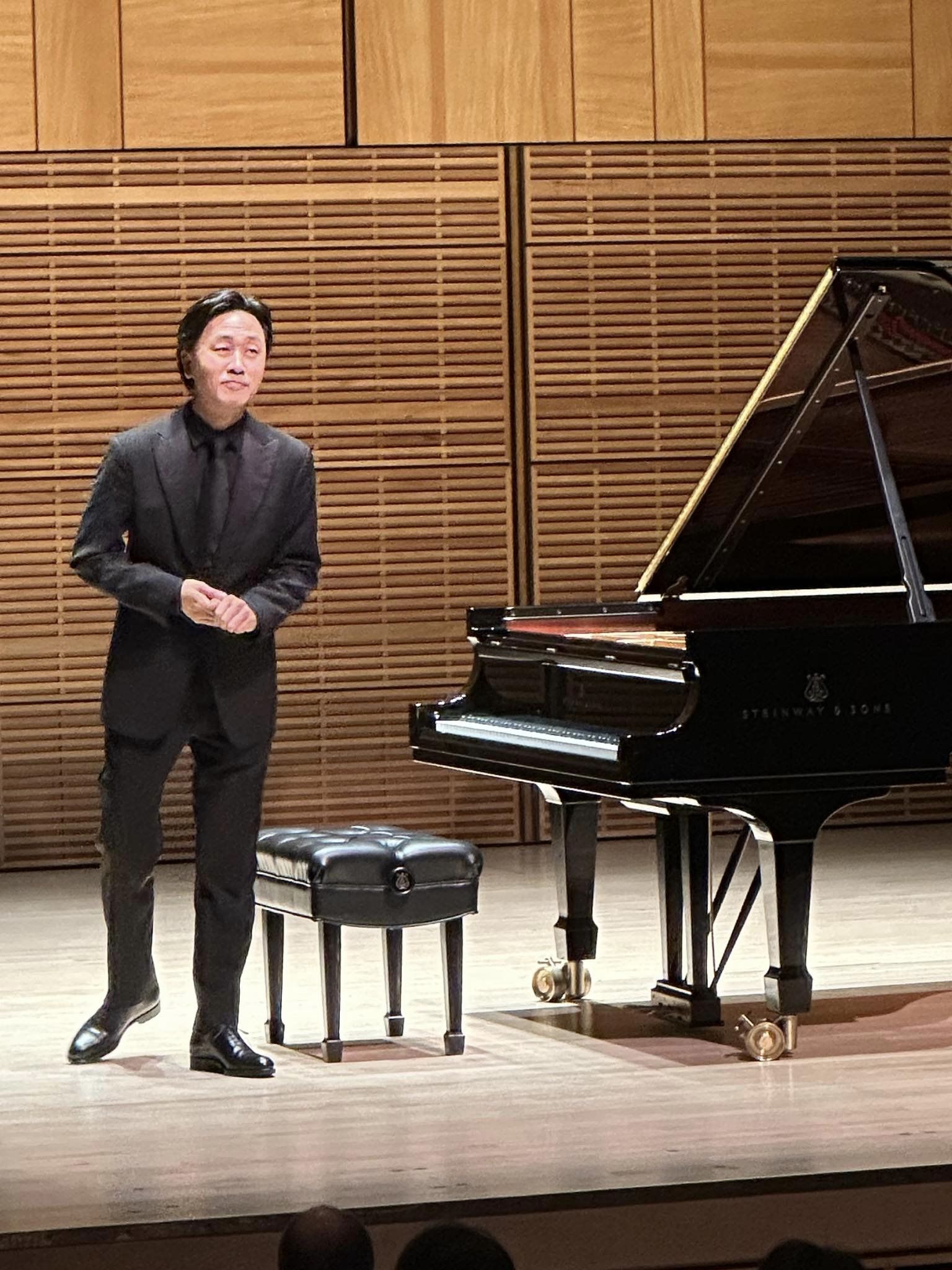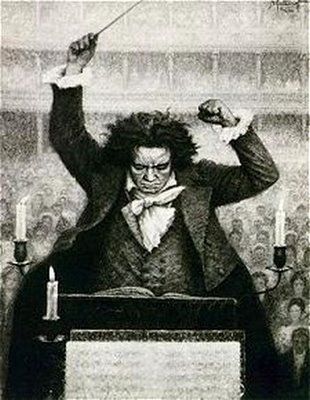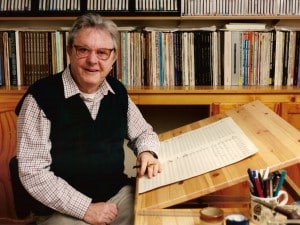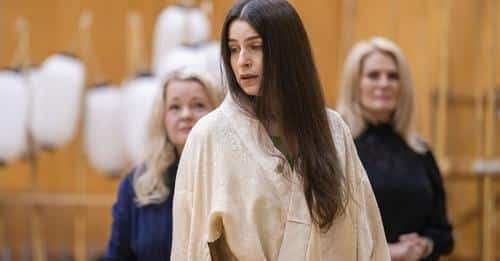Glenn Gould at his most controversial
OrchestrasDaniel Poulin offers a further reminiscence:
Without a doubt the three most controversial Glenn Gould solo piano recordings are Mozart’s Rondo a la Turca and Beethoven’s Appassionata and Moonlight Sonatas. The main reason for the controversy resides in the choice of tempo, either too slow or too fast as compared to the traditional versions by most pianists. While Gould never hid the fact he disliked Sonata No.23 (Appassionata), he also declared that Sonata No.14 (Moonlight) was one of Beethoven’s best. “It is a masterpiece of intuitive organization that escalates from first note to last. I actually quite like it” he told me when we discussed the amount of negative feedback his recording triggered. Case in point: in 1973 I was working for Radio-Canada in Winnipeg. One Saturday evening the guest of honour for a quiet diner at home was Mr.Tom Taylor, an established radio producer for CBC Concerts and a true gentleman, under normal circonstances. It was my first encounter with Mr.Taylor and I wanted to create as good an atmosphere as possible. I had put on the turntable one of Gould’s long playing discs, Beethoven’s Pathetique, Moonlight and Appassionata Sonatas. As luck would have it, the Moonlight’s first movement was just starting as Tom entered the living room. “Take that off, please” was Mr.Taylor’s loud reaction. “Are you serious sir”, I just said. “You better believe it; if you don’t I’m gonna leave.” Now, Tom was a big man, well over 6 feet tall, and his order sounded more like a menace. That was the end of Gould’s record.
When told about such an extreme reaction Glenn simply laughed. “Granted, the tempo is rather fast.” And he added, “Schnabel plays the first movement quite fast too.”
Gould grew up listening to recordings of Schnabel.






Well, to each their own. I personally prefer the first movement slower and more intense, almost marcia funebre, but if pianists want to do things their own way without utterly misreading the score then that’s their thing. I won’t be surprised if someone does a vivacissimo version of Chopin’s funeral march one day tbf. Oh wait, that was on a video game years ago…
Glenn Gould recorded Beethoven Sonatas 30-32 soon after the triumph of the first Goldberg Variations. Personally, I find it an attack on Beethoven, and Gould really demolishes the Arietta of Op. 111. As an admirer of his Bach, I cannot understand his deep hostility.
It’s good he didn’t see the dirty spoon.
Gould didn’t serve music: he imposed his own odd views on it. He was a complete eccentric, hence the excessive interest in him.
Well in all fairness, Beethoven does mark the time signature as 2/2, or two beats per bar. This recording definitely adheres to that – the only way to truly follow that time signature is to play it faster.
Still, that doesn’t stop all the nanas and papas going ‘ughhhhhh but I don’t like it like that’.
It depends if you want it slow and contemplatively in four or in two-pulsation.
The Adagio sostenuto is marked “alla breve”, so…
Would sound even better on a forte piano
It sounds much better, and makes more musical sense. Petra Somlai: https://www.youtube.com/watch?v=Ua_GHVEDCdI
(Also Tom Beghin on the undamped register: https://www.youtube.com/watch?v=LJuNgjb2HcY)
Fifty-five years ago, in his seminal essay “The Prospects of Recording” (High Fidelity, 1966) Glenn Gould wrote:
“At the center of the technological debate, then, is a new kind of listener — a listener more participant in the musical experience. The emergence of this mid-twentieth-century phenomenon is the greatest achievement of the record industry. For this listener is no longer passively analytical; he is an associate whose tastes, preferences, and inclinations even now alter peripherally the experiences to which he gives his attention, and upon whose fuller participation the future of the art of music waits.”
http://www.sfu.ca/sonic-studio-webdav/AudioMedia/Readings/Alphabetical/Gould-Prospects_of_Recording.pdf
http://sites.music.columbia.edu/cmc/courses/g6631/fall2012/page4/files/GlenGould-VanashingPerf.pdf
Gould then cut straight to the bone of the matter:
“Today, the variety of controls made available to him requires analytical judgment. And these controls are but primitive, regulatory devices *compared to those participational possibilities which the listener will enjoy once current laboratory techniques have been appropriated by home playback devices.*
…Indeed, a significant step in this direction might well result from that process by which it is now possible to disassociate the ratio of speed to pitch and in so doing … truncate splice-segments of interpretations of the same work performed by different artists and recorded at different tempos.”
This is precisely what I am doing, as of this writing.
Current technology has endowed us with the tools envisioned by Gould more than half a century ago. Stellar software developed by French mathematicians Philippe Guillaume and Julien Pommier allows for the detailed virtual *modelling* in real time, not just sampling, of all relevant aspects of a piano (and other keyboard intruments): hammer hardness and spectrum, string length and resonance, soundboard impedance, etc. Variable temperament goes without saying. This allows me to input the Mondschein Sonata as a MIDI file, properly played on a proper piano mechanism controller keyboard (mine, which I find rather nice, was built by a distinguished former Bösendorfer engineer who used to be in charge of their digital reproducing system before he went independent) — or leave that pleasurable task in professional pianistic hand hands, which I’m glad to do — and replay it on a different, virtually modeled instrument. Varying not just tempo or temperament, but the positioning of microphones, the reverberations of the concert venue, and indeed the mechanical details of the instrument. One can start, say, on a modern Yamaha or classic 1899 Bechstein concert grand, try a Blüthner or a Grotrian, and end up with a 1796 Broadwood pianoforte (the one from the Schloss Kremsegg collection). The latter has my current preference, together with a 1922 Erard.
Even Gould’s “segments of interpretations performed by different artists” are easily feasible, thanks to the morphing and layering of different instruments. Not as a mere tweak on recorded performances, mind, but as fresh creations.
The man was half a century ahead of his time.
What a truly ignorant ( in every sense of the word) prat Mr Tom Taylor sounds to have been
BTW…..Mr. Taylor’s full, legal first name was just: Tom.
Perhaps Gould also grew up listening to quickly-paced versions of “Ah Soccorso! Son Tradito!”
Boy, it sure didn’t take much to be “controversial” back then.
I hadn’t heard this before. It’s definitely quicker & lighter than what I’m used to, but the mood seems the same. He hasn’t tried to turn it into a dance.
In fact, it reminded me that Chopin hadn’t happened yet — no nocturnes, no funeral march — so there would have been no basis back then for giving it the Chopin treatment that it so often gets today.
Speaking of how little it took to be controversial: back around the same time, the renowned soprano Pilar Lorengar was considered “controversial” because of her vibrato. Hard to believe now:
https://www.youtube.com/watch?v=FgKu1oHnSqc&ab_channel=Jos%C3%A9AntonioNavarro
The first thing that hit me about the recording of this particular Moonlight version was that it continued to hold me without a break. I’ve never felt this way about anyone else’s version. The notes of the piano seemed completely connected all through. (An illusion, of course.)
The tempo isn’t all that controversial given the 2/2 time signature. The Incisive touch robs the famous piece of mystery, bringing it closer to Czerny. As with everything GG did , it kind of works on its own terms though.
“and a true gentleman, under normal circonstances”
His true colors came right out. Should have told that fake gentleman to pack and go.
I wonder if Beethoven at times played his piano pieces a little faster or a little slower? Just sayin